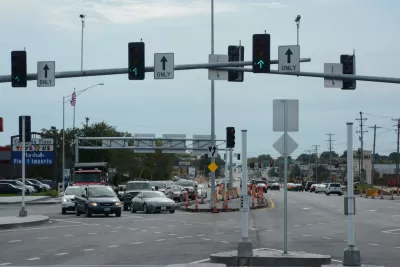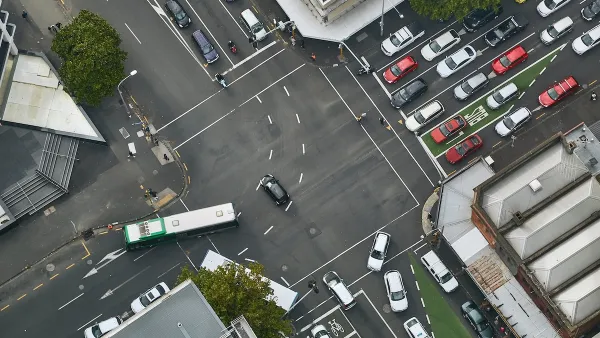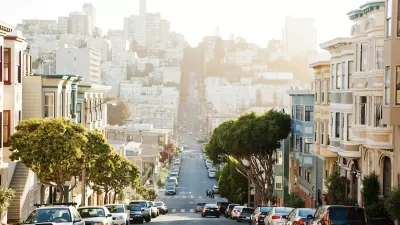Its design can appear baffling at first, but the DDI presents drivers with far fewer opportunities to collide with each other than traditional four-way intersections.

Laura Bliss covers the spread of the diverging diamond interchange, or DDI. "Rather [than] make drivers turn at a right angle to merge onto a highway, the two directions of traffic diverge and ribbon over one another. One lane peels off to funnel cars onto the highway, and they never have to turn against traffic."
Bliss includes an embedded Youtube video from the city of Calgary, which cheerily explains how drivers should use a DDI.
"DDIs are proliferating because they're safer than a traditional four-way intersection. Where two, two-lane roadways intersect, drivers have 32 separate opportunities to collide into each other. In a DDI, there are only 14." They can also incorporate pedestrian crossings, as the Calgary video shows.
FULL STORY: The Diverging Diamond Interchange Is Coming to a Road Near You

Planetizen Federal Action Tracker
A weekly monitor of how Trump’s orders and actions are impacting planners and planning in America.

Restaurant Patios Were a Pandemic Win — Why Were They so Hard to Keep?
Social distancing requirements and changes in travel patterns prompted cities to pilot new uses for street and sidewalk space. Then it got complicated.

Maui's Vacation Rental Debate Turns Ugly
Verbal attacks, misinformation campaigns and fistfights plague a high-stakes debate to convert thousands of vacation rentals into long-term housing.

In California Battle of Housing vs. Environment, Housing Just Won
A new state law significantly limits the power of CEQA, an environmental review law that served as a powerful tool for blocking new development.

Boulder Eliminates Parking Minimums Citywide
Officials estimate the cost of building a single underground parking space at up to $100,000.

Orange County, Florida Adopts Largest US “Sprawl Repair” Code
The ‘Orange Code’ seeks to rectify decades of sprawl-inducing, car-oriented development.
Urban Design for Planners 1: Software Tools
This six-course series explores essential urban design concepts using open source software and equips planners with the tools they need to participate fully in the urban design process.
Planning for Universal Design
Learn the tools for implementing Universal Design in planning regulations.
Heyer Gruel & Associates PA
JM Goldson LLC
Custer County Colorado
City of Camden Redevelopment Agency
City of Astoria
Transportation Research & Education Center (TREC) at Portland State University
Jefferson Parish Government
Camden Redevelopment Agency
City of Claremont





























